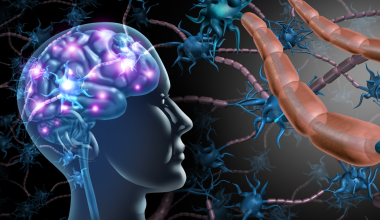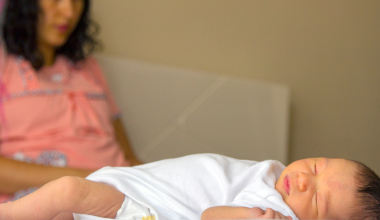According to a January 2022 survey done by the Centre for Addiction and Mental Health (CAMH), over 25% of Canadian survey participants reported experiencing moderate to severe anxiety, significantly higher than the 19% reported in their July 2021 survey. Similar spikes were found in feelings of loneliness and depression.
Article Navigation
Generalized Anxiety Disorder (GAD) | Panic Disorder | Social Anxiety Disorder (Social Phobia) | Specific Phobia-Related Disorders | Separation Anxiety Disorder | Selective Mutism | Agoraphobia | Substance or Medication-Induced Anxiety Disorder | Anxiety Disorder Due to Another Medical Condition | Unspecified Anxiety Disorder | Other Specified Anxiety Disorder |
Cries from the public have caught the attention of the federal government. “The COVID-19 pandemic has presented significant challenges in meeting the mental health needs of older adults,” says the Honourable Carolyn Bennett, Canadian Minister of Mental Health and Addictions and Associate Minister of Health, ”supporting positive mental health and well-being is a priority for our government.”
Increase In Anxiety Disorders
Increased interest in mental health has sparked conversations around anxiety and anxiety disorders. Anxiety is a normal part of everyday life, used to prepare you for life’s challenges and protect you from harm. However, anxiety disorder is a type of mental illness in which the individual experiences feelings of fear, worry, and anxiety that are long-term, intense, and unexpected. The anxiety does not go away and may get worse over time, eventually impacting their daily activities of living.
Individuals with an anxiety disorder can receive a diagnosis and treatment to manage their feelings. According to the 5th edition of the Diagnostic and Statistical Manual of Mental Disorders (DSM-5), there are 11 distinct types of anxiety disorders. However, you can have more than one at a time.
These disorders can be triggered by prominent, stressful, negative, or traumatic life events in either childhood or adulthood. Other risk factors include a family history of anxiety or other mental disorders. Symptoms often need to be experienced for over 6 months to be formally diagnosed. Outlined below are the different types of anxiety disorders along with their signs and symptoms.
1. Generalized Anxiety Disorder (GAD)
Individuals with GAD experience disproportionate and continual feelings of anxiety or dread in daily life. Different from occasional worry over typically stressful events, GAD greatly interferes with everyday challenges. Symptoms may include being easily irritated, tired, or distracted, experiencing stomach, head, and muscle aches, along with trouble sleeping or controlling feelings of restlessness and worry.
MYTH: “If you have an anxiety disorder, you should just avoid situations that make you feel stressed.”
FACT : Avoidant behaviour is a symptom of anxiety and often tends to reinforce it. It is important to work through feelings of anxiety, and if needed, consult a professional.
2. Panic Disorder
A panic disorder involves recurring, intense, and unexpected panic attacks, often without a specific trigger. Panic attacks are moments of overwhelming dread, fear, and discomfort, generally lasting from 5 to 30 minutes. Emotional symptoms include fears of dying or losing control, along with feelings of impending doom. Individuals may subsequently worry about when the next attack will happen, possibly avoiding potentially triggering environments. Physical symptoms include:
- Pounding or racing heart, heart palpitations
- Shortness of breath, the sense of choking
- Shaking, chills, sweating
- Nausea, dizziness
- Chest or abdominal pain
Symptoms may resemble a heart attack. If you believe you may be experiencing a heart attack, it is always recommended to go to an emergency room. Individuals without a panic disorder may also experience panic attacks, with less frequency and fear of recurring attacks.
MYTH: “Panic attacks can make you faint.”
FACT: Although panic attacks are different for everyone, there are a general range of symptoms (as listed above). However, fainting during a panic attack is rare. Anxiety of a fainting spell can contribute to a panic attack while feeling short of breath, faint, and lightheaded are common symptoms of anxiety and panic.
Previously called social phobia, social anxiety disorder is the overwhelming and continual fear of everyday social situations. Behaviours include avoidance of social environments due to feelings of embarrassment and self-consciousness, along with the worry of being negatively perceived and judged by others.
MYTH: “If you live a healthy lifestyle with proper food and exercise, your anxiety will go away.”
FACT: Although these behaviours can help relieve anxiety, it does not cure clinical anxiety disorders. Symptoms of anxiety disorders are considered intense, unexpected, and often not based in reality. As a result, clinical intervention or counselling may be needed to help guide you through your anxieties.
Often called simple phobias, this group of anxiety disorders results in an intense and disproportionate level of fear, worry, and avoidance of specific objects or situations. Individuals with specific phobias may experience panic attacks. 6 example groups of simple phobias include:
- Animals (dogs, birds, insects, etc.)
- Body/Blood injection (bodily fluids, injections, medical procedures, etc.)
- Natural environment (water, fire, natural disasters, etc.)
- Sexual (nudity, sexual acts, etc.)
- Situational (enclosed spaces, flying, public speaking, etc.)
- Other (colours, foods, objects, characters, etc.)
MYTH: “Some people are just exaggerating their worry and like to control the uncontrollable, there’s nothing they can do to change.”
FACT: Anxiety disorders are real and valid illnesses that can be managed with proper intervention. Whether it is therapy or medication (most often a combination of both), you can reduce your worry and suffering and gain a new perspective on your thoughts and beliefs.
5. Separation Anxiety Disorder
Individuals with separation anxiety disorder continually fear being separated from their attachment figure. When separated, individuals may worry intensely about something dangerous happening to their loved ones, leading to difficulty leaving their attached environments to perform daily activities of living. People may also experience physical symptoms or nightmares about their anxieties.
MYTH: “Anxiety disorders are always rooted in childhood so therapy should only focus on that time.”
FACT: Anxiety disorders can result from many sources. Effective therapy finds the past source of anxiety while also focusing on the present by building new skills to manage thoughts, emotions, and behaviours.
6. Selective Mutism
Often initially observed in children, selective mutism is the inability to speak in specific social situations despite having typical language skills (therefore, it is not a communication disorder). As a form of social anxiety, individuals may speak comfortably with familiar faces such as family, but find trouble speaking in public places, such as school. Symptoms include being:
- Withdrawn, shy, or clingy
- Nervous, uneasy, or socially awkward
- Rude, stubborn, or aggressive with temper tantrums
- Compulsive traits or fear of embarrassment
In order to be diagnosed, symptoms must be present for at least 1 month. Behaviour can progress into adult years if not treated.
MYTH: “Only adults can have anxiety.”
FACT: Anxiety is not limited to adults with interpersonal and intrapersonal issues. According to the Canadian Mental Health Association (CMHA), about 3% of Canadian children experience an anxiety disorder. Anxiety can greatly impact a child’s development into adulthood and should be attended to with early professional intervention.
7. Agoraphobia
Agoraphobia (uh-gaw-ruh-FOW-bee-uh) is the fear and avoidance of environments and situations that cause intense feelings of panic, anxiety, and helplessness. Environments may include general locations outside your home, enclosed or open spaces, along with crowds and lines. Previously linked to panic disorder (as persistent panic attacks are often simultaneously experienced), agoraphobia is now its own distinction in the DSM-5.
MYTH: “Anxiety disorders aren’t a big deal.”
FACT: Having an anxiety disorder is a real illness that can impact your everyday activities of life, from work to relationships. It can also impact your physical health with symptoms such as trouble eating and sleeping along with muscle pain discomfort and pain. With professional treatment, these symptoms can be managed.
8. Substance or Medication-Induced Anxiety Disorder
Individuals with this anxiety disorder experience extreme and persistent fear or worry as a direct result of taking or ceasing the use of a substance or medication (and therefore did not have an anxiety disorder before starting use). Substances and medications can impact the balance of certain chemicals in our brains, ultimately causing symptoms of anxiety during use or withdrawal.
Substance examples include:
- Alcohol
- Illicit drugs (cocaine, LSD, etc.)
- Over-the-counter medicines or substances (decongestants, caffeine, etc.)
- Prescription medicines (to treat asthma, thyroid, or Parkinson’s disease, etc.)
Symptoms include:
- Fear of losing control or a sense of impending doom
- Pounding heartbeat or shortness of breath
- Shaking, tingles, or numbness
- Chills, hot flashes, or sweating
- Difficulty concentrating or remembering things
- Difficulty sleeping (falling or staying asleep)
- Weight loss due to suppressed appetite, stomach pain, vomiting, or diarrhea
MYTH: “Unconditional support and validation from friends and family along with assistance in avoiding stressful situations is healthy for someone with an anxiety disorder.”
FACT: Unconditional reassurance and encouraging avoidance behaviours can prevent you from facing your anxieties. Compassion and motivation from friends and family to work through your worries is most beneficial.
9. Anxiety Disorder Due to Another Medical Condition
Also known as comorbid anxiety, this anxiety disorder occurs when symptoms of persistent and intense anxiety, fear, and panic appear due to a medical condition (therefore anxiety about the condition is not considered an anxiety disorder.) For example, experiencing panic attacks due to chronic pain or hyperthyroidism can prompt a diagnosis. Full physical, medical, and psychiatric histories must be taken to ensure that this is the most accurate diagnosis for the individual and the behaviour can not be better explained by another mental disorder.
MYTH: “You can easily tell when someone has an anxiety disorder.”
FACT: Despite the overwhelming nature of an anxiety disorder, it is common for others to not notice when someone is struggling. They may be worried about negative attention or judgement, being perceived as weak or a burden, or using avoidant or coping behaviours to avoid embarrassment, exacerbating their anxiety.
10. Unspecified Anxiety Disorder
If you have most but not all of the criteria outlined in the DSM-5 for a specific anxiety disorder but still experience anxiety or panic resulting in significant clinical and daily impairment, you may fall under this category. This diagnosis often occurs in hospital settings where a full psychiatric evaluation may not be possible. Symptoms are similar to that of typical anxiety disorders, albeit to a lesser frequency, intensity, or degree.
MYTH: “Medication is the only treatment for anxiety disorders.”
REALITY: Medication can be an effective intervention, however, therapy such as cognitive behavioural therapy (CBT) can be just as or more effective (notably in the long-term) for some individuals. Consult your physician for more details on what is right for you.
11. Other Specified Anxiety Disorder
Similar to an unspecified anxiety disorder, if you experience significant clinical and daily impairment due to anxiety but do not have all of the criteria for a specific disorder, you may fall under this category. This classification considers cultural components such as:
- Generalized anxiety occurring less often than most days
- Panic attacks with limited symptoms (less than four)
- Khyâl cap (wind attacks)
- Often found in Cambodians, it is an anxiety-inducing sensation in which a wind-like substance (khyâl) rises up the body with the blood. Symptoms include shortness of breath, pounding and fluttering heart beats, dizziness, and cold extremities.
- Ataque de nervios (attack of nerves)
- Often found in Hispanic individuals, it is an acute period of grief with crying, shaking, and feeling of impending loss of control, or anger with increased body temperature, uncontrollable shouting, as well as verbal and physical aggression.
MYTH: “Medications for anxiety are addictive.”
FACT: SSRIs and SNRIs (common anti-anxiety medications) are not addictive, while benzodiazepines are safe for short-term use with a risk of addiction with long-term abuse. Most importantly, all medication is carefully selected, tailored, and managed by a medical professional to ensure safe consumption.
Diagnosis of an anxiety disorder can be a thorough but rewarding process. Interested in receiving mental health care and don’t know where to begin? Check out our exhaustive Guide to Canadian Mental Health Support, a compilation of invaluable mental health support resources available to Canadians from coast-to-coast and covering the gamut of mental health issues.
The information provided in this article is for general informational purposes only and is not intended as a substitute for professional medical advice, diagnosis, or treatment. Always seek the advice of your family physician or qualified health provider with any questions you may have regarding a medical condition.
Now that you’ve learned about the 11 types of anxiety, why not test your understanding? Take this quick 10-question quiz!
The information provided on TheHealthInsider.ca is for educational purposes only and does not substitute for professional medical advice. TheHealthInsider.ca advises consulting a medical professional or healthcare provider when seeking medical advice, diagnoses, or treatment.











